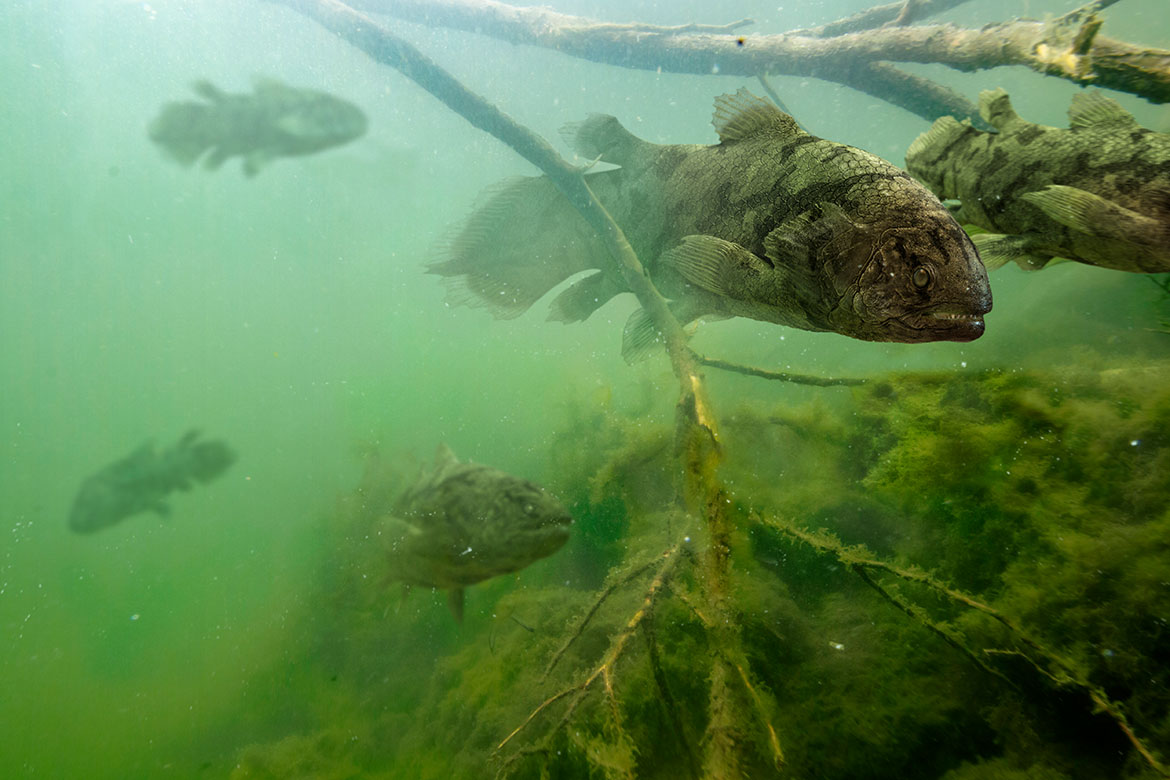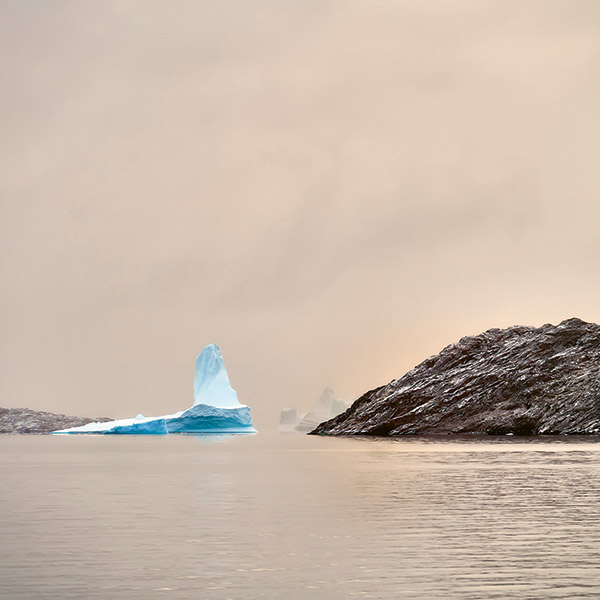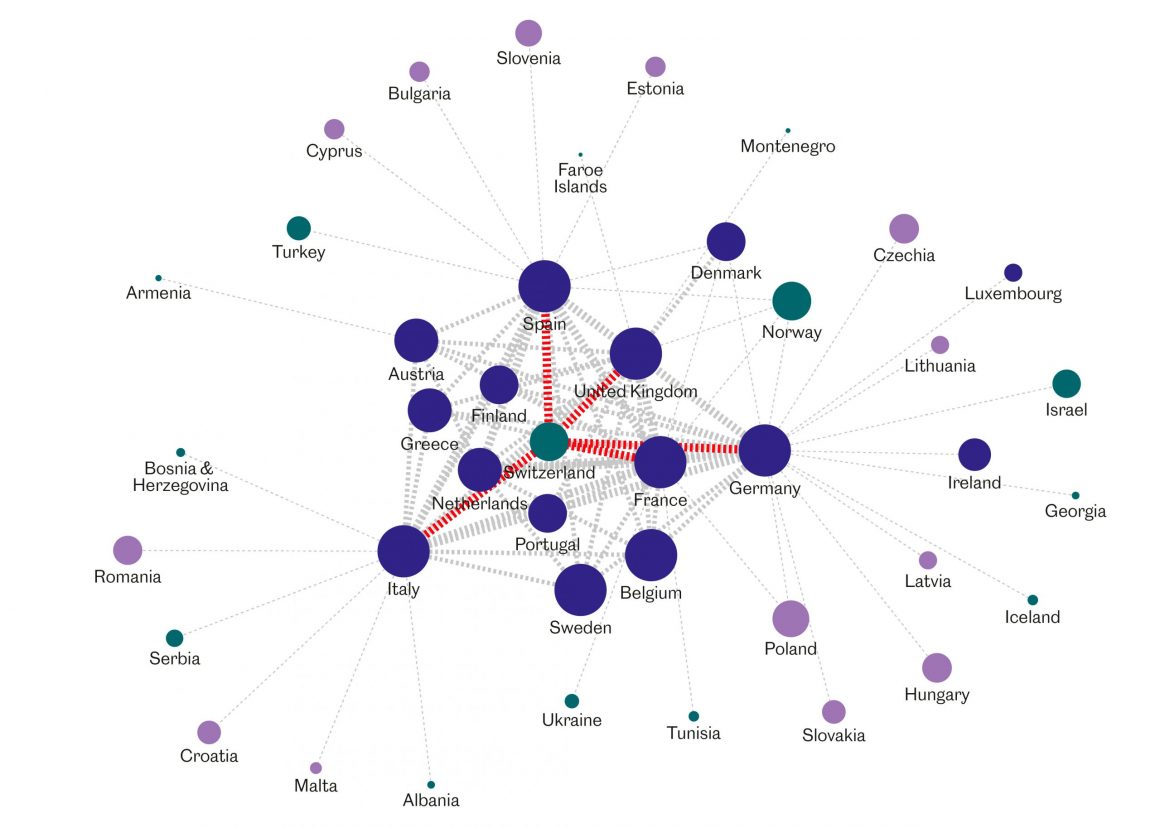EVOLUTION
Time stands still for some creatures
Coelacanths look almost the same as they did millions of years ago. Swiss researchers are investigating whether evolution has really been so slow for these ‘living fossils’.

350 million years ago, coelacanths displayed greater variety: here, for example, is the Holoptychius (meanwhile extinct). | Illustration: Jose Antonio Peñas/Science Photo Library
When the South African researcher Marjorie Courtenay-Latimer found a coelacanth on a fishing trawler in 1938, it was a sensation. This bizarre fish ought not to have existed at all. Until then, coelacanths had only been known as fossils, and palaeontologists were actually convinced that they had died out 66 million years ago. But not only had the coelacanth survived mass extinction – it also looked strikingly similar to its fossil cousins, some of which were several hundred million years old.
To this day, the coelacanth is regarded as a ‘living fossil’, a species that evolution seems to have passed by without a trace. Lionel Cavin, a palaeontologist at the Natural History Museum in Geneva, insists that this term is actually incorrect: “Over time, evolution brings about changes and adaptations in every species”. But studies have shown that there are indeed animals and plants whose bodily structure has evolved extremely slowly.
Cavin has been studying coelacanths for decades. He has written a book about them and heads a research project investigating the rate of evolution in this group of fish. Across the world, a total of some 100 fossil species of coelacanth are known. The oldest are 420 million years old. To be sure, there are sometimes clear differences between the different species, says Cavin. Some of them are less than 10 cm long, while others are over five metres in length. But many of their physical features have remained remarkably constant. “One study even came to the conclusion that coelacanths have changed the least of all animal groups whose evolution we have studied”.
Spectacular findings in Graubünden and Ticino
However, the investigation carried out by Cavin’s team shows that there were also times when these fish were subject to considerable evolutionary change. Several newly discovered fossils have contributed to their findings – including some from Switzerland. In 2014, an excavation team from the University of Zurich made a spectacular find in Ducanfurgga, south of Davos. They found a 240-million-year-old coelacanth that deviated in several features from the normal structure of the species group, as Lionel Cavin’s investigations later proved. The size of several of its bones are different, and it has a very squat, short body, a small mouth, and a dome-shaped head.
Cavin also came across fossils in the Palaeontological Institute and Museum of the University of Zurich that had previously garnered hardly any attention. They are from Monte San Giorgio, a mountain in southern Ticino that is considered the most important Swiss site for coelacanths. Since the 1920s, palaeontologists have repeatedly found such fossils there. Many are somewhat typical representatives of this group of fish. But the ‘new’ finds (whose existence has not yet been announced in scientific journals) are of a previously unknown species, says Cavin. They are of an atypical coelacanth that is closely related to the species found in the canton of Graubünden. Both come from the same rock strata that dates from 10 million years after the transition from the Permian to the Triassic Periods. At that time, 80 percent of all species living in the sea disappeared in the largest mass extinction in the history of the Earth.
When considered along with other finds, Cavin believes that this proves there was increased speciation among coelacanths at that time. “As their habitats emptied, this probably meant new opportunities presented themselves to the surviving species”, he explains. “This will have led to a temporary acceleration in the rate of coelacanth evolution”.
According to Torsten Scheyer of the University of Zurich’s Palaeontological Institute and Museum, it is not just environmental catastrophes and mass extinctions that lead to an acceleration in the rate of evolution. It can also be triggered when a new niche is populated – such as when the precursors of ichthyosaurs went from the land back into the oceans. This resulted in greater pressure to adapt. “Those animals had to adapt to the salinity of the water, and move differently”, he says. At some point, the physical changes they underwent had hindered their reproduction on land. “In the case of ichthyosaurs, this meant they stopped laying eggs. Instead, they became viviparous – they began bearing live young”. In such cases, species explosion can occur.
Once some kind of equilibrium has been established and environmental conditions remain constant, a standstill can occur during which species change their body structure only slightly. This alternation between long phases of evolutionary stability and short phases of rapid speciation is called ‘punctuated equilibrium’ by evolutionary scientists. But Scheyer says that it is difficult to identify this mechanism: “It only fits well-studied groups for which we have a lot of fossil evidence”.
One possibility for studying the direction and pace of genetic and physical adaptations is offered by so-called ‘fitness landscapes’, where biologists calculate the respective advantages and disadvantages of possible genetic changes. The result is a kind of map that represents advantageous gene combinations with a high degree of fitness as mountains, and disadvantageous combinations with low fitness as valleys. When organisms adapt to their environment, they move towards the mountain peaks. Once they have reached the top, each new mutation reduces the fitness of its carrier – and so it disappears from the population again. It is therefore possible that coelacanths are stuck on such a fitness peak.
Some mutate quicker
You have to be careful with the concept of the fitness landscape, however, says Claudia Bank, the head of the Division of Theoretical Ecology and Evolution at the University of Bern. This is because the totality of all possible gene combinations is immense and multi-dimensional. “In such a genotype space”, she says, “a single mutation – however unlikely it might be – can actually ‘beam’ a population from one mountain to another”.
According to Bank, the population size and mutation rate play important roles in the pace of evolution. The bigger the population and the quicker the mutation rate, the quicker changes will occur. Flu viruses, for example, have particularly high mutation rates, she says. But even they show big differences: “Influenza B evolves more slowly than influenza A, even though both types circulate in human populations and therefore have the same environmental conditions”.
With fossils it is naturally difficult to determine genetic factors such as their mutation rate, so questions remain about the decelerated evolution of some animal groups. As with coelacanths, the body structure of horseshoe crabs – peculiar creatures that inhabit the seabed – has remained almost unaltered over several hundred million years. We can only speculate why, according to Torsten Scheyer: “Perhaps the physical ‘blueprint’ of these animals has enabled them to cope well with shifting environmental conditions”.
Tortoises are one of Scheyer’s main areas of research and are also often counted among the ‘living fossils’. Their key distinguishing features – the shell on their back and stomach – evolved over 200 million years ago. This protective structure has proven so successful that it has hardly changed to this day, says Scheyer, even though its protective characteristics might not have been the first or most important factor in the earliest tortoise shells.
What many of these living fossils have in common is their longevity. The Atlantic horseshoe crab does not reach sexual maturity until it is nine years old. “And some species of tortoise do not reproduce until they are 20 years old”, says Scheyer. This slows down their rate of evolution – when compared, for example, to a small rodent that can have several litters every year.
Lionel Cavin suspects that this trend to late sexual maturity could also provide an explanation for the slow rate of evolution in coelacanths. Recent studies have shown that they could live to be at least a hundred, and do not reproduce until they are several years old. “Maybe”, he speculates, “this is already sufficient to explain why they haven’t changed much over all these millions of years”.




